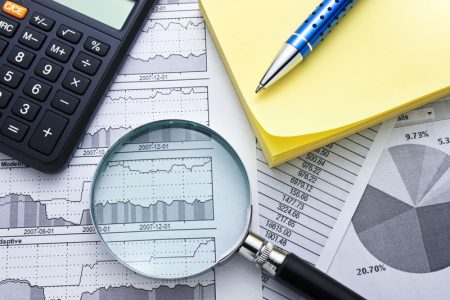The numbers: The U.S. grew at a somewhat slower 2.1% annual pace in the second quarter, revised figures show, but in retrospect the economy still showed more underlying strength than expected.
Gross domestic product growth was marked down from an initial 2.4%. The increase was still faster than what economists consider the optimal speed for U.S. growth, however.
The rise in gross domestic product in the spring —though now in the rearview mirror — is likely to give way to another surprisingly robust reading in the third quarter ending in September. GDP forecasts estimate growth of 2.5% or higher.
Economists had widely believed U.S. growth would falter or even tumble into recession in light of a sharp increase in interest rates orchestrated by the Federal Reserve to tame high inflation. Higher borrowing costs typically depress the economy.
A slowdown toward the end of the third quarter might even be underway. Some parts of the economy such as housing and manufacturing are struggling and adjusted pretax corporate profits fell slightly in the second quarter to mark the third decline in a row.
Still, most of the economy’s vital signs still look pretty good.
One caveat: A measure of U.S. growth based on income, known as GDI, suggests the economy grew just 0.5% in the second quarter. So second-quarter growth could get marked down again, some analysts say.
Key details: The downward revision in GDP mostly resulted from somewhat softer businesses investment and inventory production than originally reported.
Companies are feeling more heat, too. Adjusted pretax profits slipped at a 0.4% annual rate and have fallen 6.5% in the past year.
The economy is largely being driven forward by consumers, whose inflation-adjusted incomes are rising for the first time in a few years. Low unemployment has also shielded households from economic distress.
The increase in consumer spending, the main engine of the economy, was revised up to 1.7% in the second quarter from an initial 1.6%.
Most other figures in the report were little changed.
GDP is updated twice after the initial results are published to incorporate new information not immediately available. The next update for the second quarter is due a month from now.
Big picture: GDP is the official scorecard for the economy, but it’s mostly a backward-looking indicator.
More recent measures of the economy such as business surveys by S&P Global and the number of job openings suggest the economy may have lost some momentum toward the end of summer.
Yet fewer economists think a recession is imminent than was the case as recently as the spring.
Looking ahead: “Weaker growth in real GDI, relative to GDP, may be an indication that tighter monetary policy is weighing on the U.S. economy,” said chief economist Gus Faucher of PNC Financial Services.
Market reaction: The Dow Jones Industrial Average
DJIA,
and S&P 500
SPX,
rose slightly in Wednesday trades.
Read the full article here













